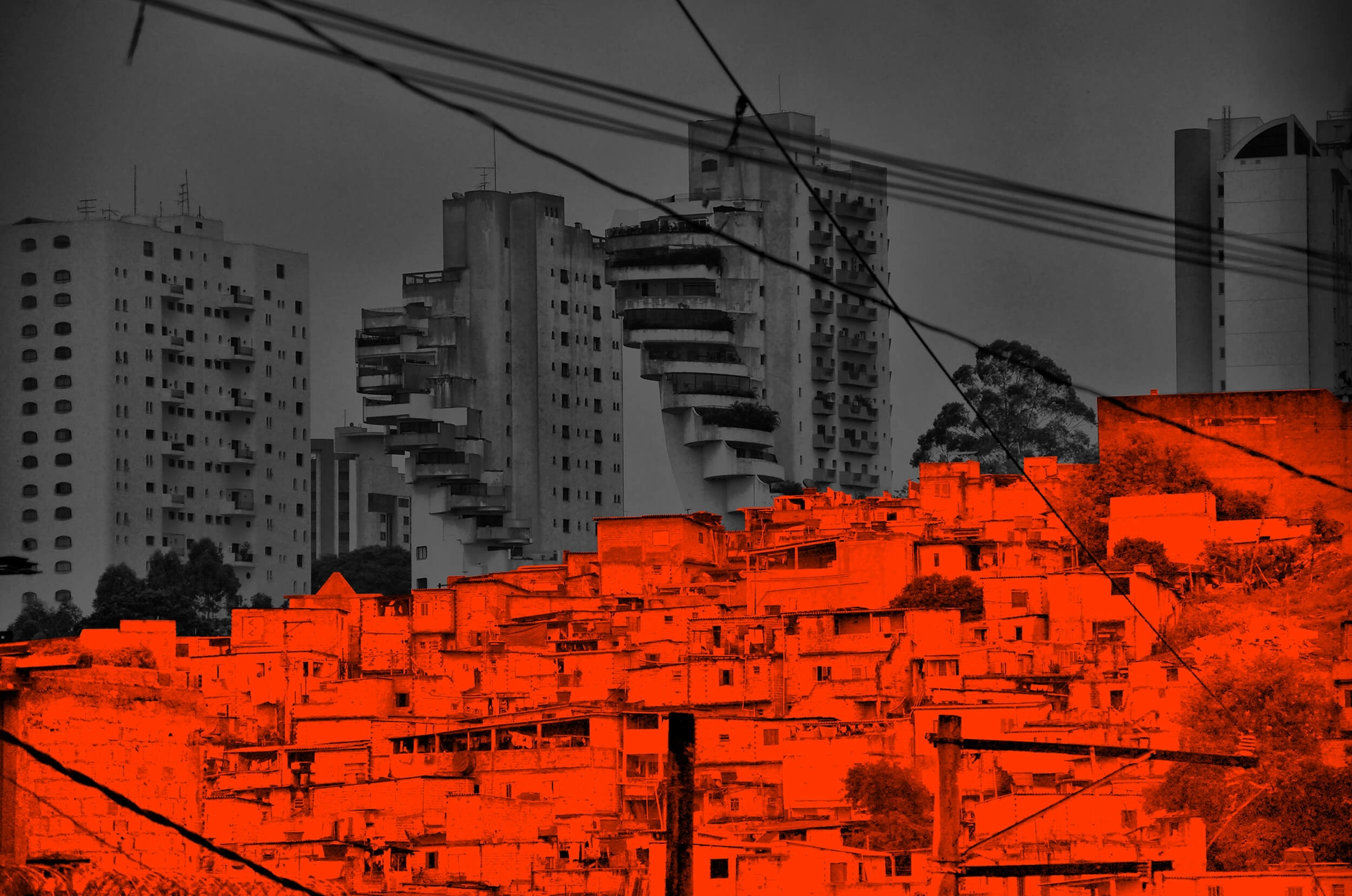
São Paulo, Brazil
"It is clearly an illustration of social inequality, maybe the biggest problem for Brazil and Latin America. The unjust and brutal difference between rich and poor, inherited from slavery, is in the origin of many other problems – violence, below-par schooling, prejudice and many other issues.”Tuca Vieira
Photographer
Inequality … in a photograph | The Guardian
Image Credit: Roberto Rocco, TU Delft
Issues explored: inequality, access to housing, infrastructure, economic disparity
Tuca Vieira
A photographer, discussing a 2004 image captured of the Paraisópolis favela next to its wealthy neighbour, Morumbi
"Inequality means that someone who is poorer is obliged to work more, so they have no time to study, which impacts on their education. As a result, they are not able to develop the critical and political awareness necessary to transform their own situation. Add to this the absence of any sense of the collective responsibility or solidarity among the privileged in Brazil, and you have a closed circle that is very difficult to break.
I am happy to have taken a photograph that expresses this problem and has acquired importance, especially in view of the immense quantity of photographs that we produce today. But deep down, I would rather it didn’t exist."
Other São Paolo stories and resources:
Perspectives on Paraisópolis
At one of the highest points on Avenida Hebe Camargo, one of the paths to get to the Pavilion, it is possible to see the second largest favela in São Paulo, a contrasting scenario next to Morumbi, one of the richest neighborhoods in the city. Approximately 100,000 people live in the century-old favela, which belongs to the District of Vila Andrade, and has an area of almost 9 km2, divided into inner neighborhoods.
On the narrow and steep Rua Itamotinga, headquarters of the Social Pavilion, there were leaders and workers from various community projects that make up the G10 Favelas, a block that brings together the ten favelas in Brazil with the greatest economic power and that seeks to organize leaders and entrepreneurs to make an impact. social positive.
“Before, this place where the Pavilion is located was swampy, had garbage and was considered a violent region. Nobody wanted to come here. We seek to revitalize it and today we have several organizations empowering the community”, recalled Jaildo Barreto dos Santos, founder of the agency Cria Brasil Comunicação, which seeks to demystify the negative image of the favela in the traditional media and take care of the marketing of Paraisópolis.
Gilson Rodrigues, 36, coordinator of the G10 Favelas, argues that the favela's potential goes beyond the local economy.“ I noticed people leaving here to go to Santo Amaro or Pinheiros to buy furniture, merchandise and pay bank bills. So, we looked for the means and in a short time a furniture store was opened. Then a bank branch. We realized that we could go further, we sought help from partners, financial policies and we saw our potential. Today there are 48 initiatives, fruits of our dreams”, he highlighted.